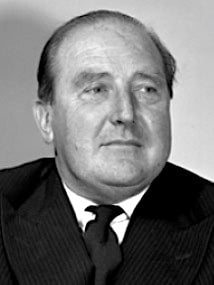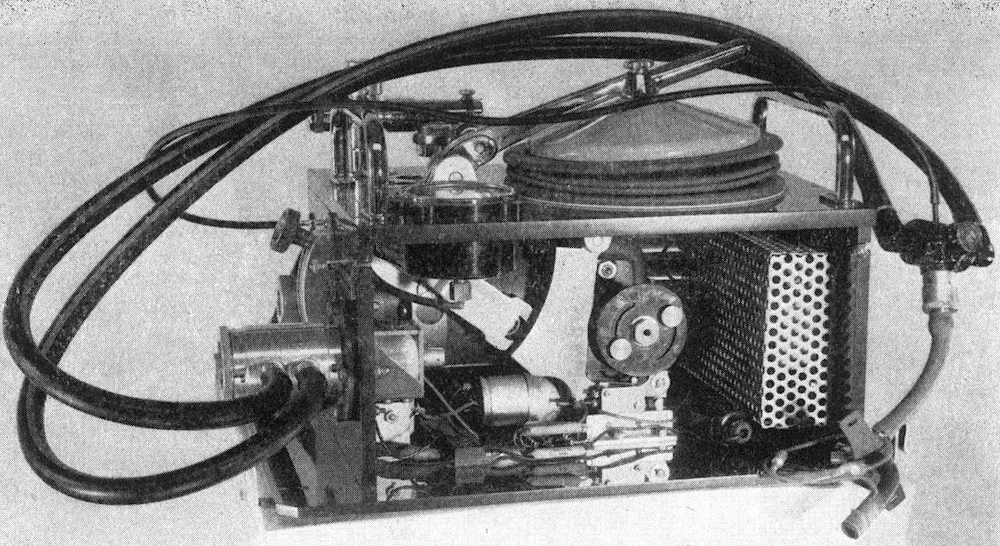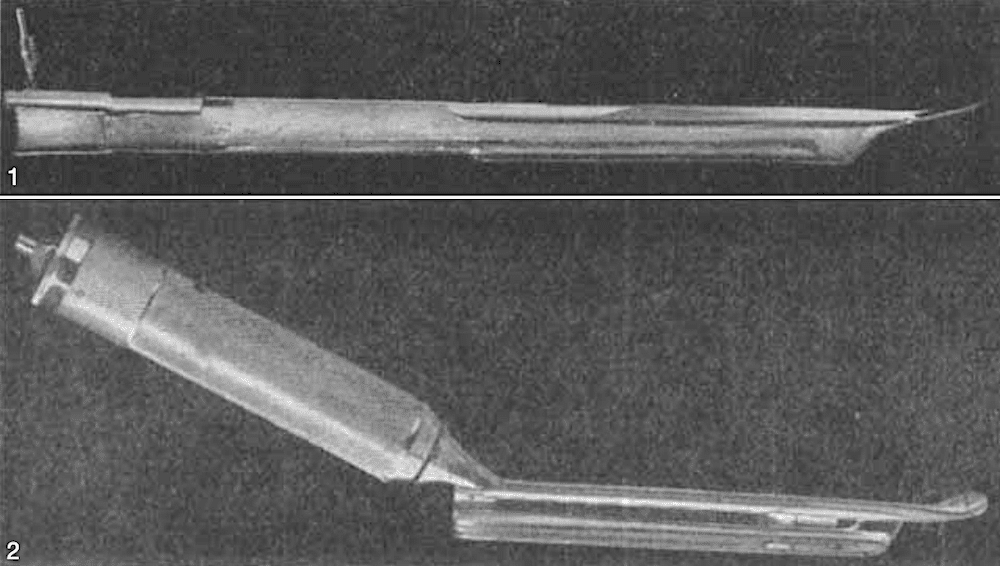Robert Beaver
Robert Atwood Beaver (1906-1975) was an English Anaesthetist, artist and engineer
Beaver is best known for his design and development of the Beaver Respirator – an intermittent positive pressure ventilator that found use during the polio epidemic of the 1950’s. His original ventilator later spurred adaptations becoming a commercial venture with 186 machines built in 9weeks!
A gregarious man with an immense capacity for work, Beaver became the local expert on the management of acute respiratory failure in neurological patients and published many articles on the specifications of mechanical respirators. In his latter years, he acted as a medical advisor to racing drivers; a motor enthusiast himself, Beaver is fondly remembered by colleagues.
A motor sport enthusiast, he was good enough a driver to act as reserve for some of the great teams of the inter-war years “To be driven by him in his own souped-up version of a mini-type car across London was an unusual experience…” BMJ 1975
Beaver was a very competent painter, particularly in oils and representing corners of the London street scene and the sea front with boats. A number of his pictures were accepted by the Royal Academy
Biography
- Born on December 5, 1906 at Poole, Dorset.
- 1932 – BMBCh, MA from New College, Oxford University; Theodore Williams prize in anatomy.
- Resident anaesthetist at St. Thomas’s Hospital, later becoming a clinical assistant to the TB clinic at the hospital before moving to Dreadnought hospital in Greenwich as an honorary anaesthetist
- 1936 – DA(RCP&S); commenced work at Queen Square’s Hospital for Neurosurgery.
- 1940 – joins RAMC to serve with a thoracic unit in North Africa, Italy and France eventually becoming a Major
- 1946 – demobilised and returns to London and works at Queen Square and London Chest & Queen Elizabeth Hospitals as a senior anaesthetist
- 1948 – FFARCS
- 1953 – frustrated with the cost of anaesthetic apparatus, Beaver designs his own respirator (from items found in his garage!) which he later modifies during the polio epidemic for use with intermittent positive pressure ventilation and tracheostomy. The Beaver respirator is employed in Oxford and Queen Square for many years later entering commercial construction
A certain most important person at the Queen Square Centenary asked me the question I still can’t answer: ‘Why was this not done before, instead of the complication of cabinet respirators?’”
Beaver 1961
- 1955 – designs a tubular laryngoscope for facilitating intubation in patients enclosed in box respirators
- 1971 – retires from medical practice in Cowes pursuing his hobbies of sailing and painting
- Died on June 22, 1975 aged 68
Medical Eponyms
The Beaver Respirator (1953)
…the Ministry became concerned about the possibility of a similar (Polio) epidemic in London, on a vaster scale. They seemed dubious about a supply of devoted students to squeeze bags. As it happened, I was making a small machine for just this purpose…
Frustration was due to the difficulty of finding geared motors and the complete lack of interest of industrial concerns in supplying small quantities of anything. Fortunately much anesthetic equipment could be converted and by devious means I discovered the Parvalux motor (disguised under other people’s names) which was successful
Beaver RA. Post Grad Med J. 1961
An enthusiastic racing motorist, Beaver’s mechanical skills came to good use with the introduction of the respirator bearing his name ‘The Beaver Respirator.’ Its origins arose from a frustration with the costs of anaesthetic apparatus in England that led Beaver to retire to his garage and construct his own prototype ventilator using a predictor motor and an altimeter from a Moth aeroplane – the cost totalling a mere £5! With the advent of the polio epidemic, Beaver later adapted his machine for use with intermittent positive pressure and tracheostomy.
The respirator comprised a small electric motor which drove a bellows by means of a crank drive. Inspiration occurred on compression of the bellows and expiration on expansion of the bellows with the negative pressure generated causing an expiratory valve to open and the gases being vented into the atmosphere.
A separate valve acted as a safety blow off valve and was adjusted to the peak pressure during inspiration. The pressure was measured by a manometer. The respiratory rate was fixed at either 14 or 18 breaths per minute and the stroke volume equivalent to the bellow capacity of 1400ml which could not be adjusted.
The bellows could also be worked by hand in the event of electrical failure. Later adaptations of the Beaver respirator (Beaver Mark II) saw controls for adjusting respiratory rate, stroke volume and inspiratory-expiratory ratio. A negative cycling phase was also refined and found benefit in head and neck surgery, abdominal surgery where major haemorrhage was encountered and cases of ‘fixed chest’ or obesity.
Beaver tubular laryngoscope (1955)
The two laryngoscopes illustrated herewith were designed specifically to facilitate intubation of conscious patients in Box respirators. Similar difficulties arise where patients must be anasthetised in plaster jackets or other surgical appliances or those with ankylosing spondylitis. In these conditions the handle of the normal laryngoscope is extremely awkward.
Beaver RA 1955
Figure 1 shows a tubular laryngoscope on the lines of a short bronchoscope but slotted to allow the passage of a tube or bronchoscope. The light is that fitted to the “adolescent” bronchoscope.
Figure 2 shows a special blade set at 25″ to the axis of the normal Rae laryngoscope handle. This blade is interchangeable with the others normally fitted.
Major Publications
- Beaver RA. A simple pneumoflator. Br Med J. 1953 Jun 20;1(4824):1375
- Beaver RA. Pneumoflator for treatment of respiratory paralysis. Lancet. 1953 May 16;1(6768):977-8
- Beaver RA. Pressure respirators; the application of negative phase. Lancet. 1955 Sep 17;269(6890):588-9
- Beaver RA. Special laryngoscopes. Anaesthesia. 1955 Jan;10(1):83-4.
- Beaver RA. The design and application of positive pressure respirators. Postgrad Med J. 1961 Jan;37(423):22-5.
- Bannister R, Beaver RA. Tracheostomy. Br Med J. 1969 Apr 19;2(5650):185
References
Biography
- Obituary. RA Beaver. BMJ 1975; 3: 103
- Robert Atwood Beaver. Lancet. 1975 Jul 12;2(7924):86.
- Robert Beaver 1906–1975. Art UK
- Wildsmith T. Dr Robert Atwood Beaver. Royal College of Anaesthetists
- Bibliography. Beaver, Robert Atwood. WorldCat Identities
Eponymous terms
- Mushin WW, Rendell-Baker L. Modern automatic respirators. Br J Anaesth. 1954 Mar;26(2):131-47.
- Dinnick OP. Modified Beaver respirator: the application of negative phase. Br J Anaesth. 1959 Dec;31:554-7.
- Shorvon S, Compston A. Queen Square: A History of the National Hospital and its Institute of Neurology. Cambridge University Press, 2018: 378
[cite]
Emergency registrar at Sir Charles Gairdner Hospital, Perth




